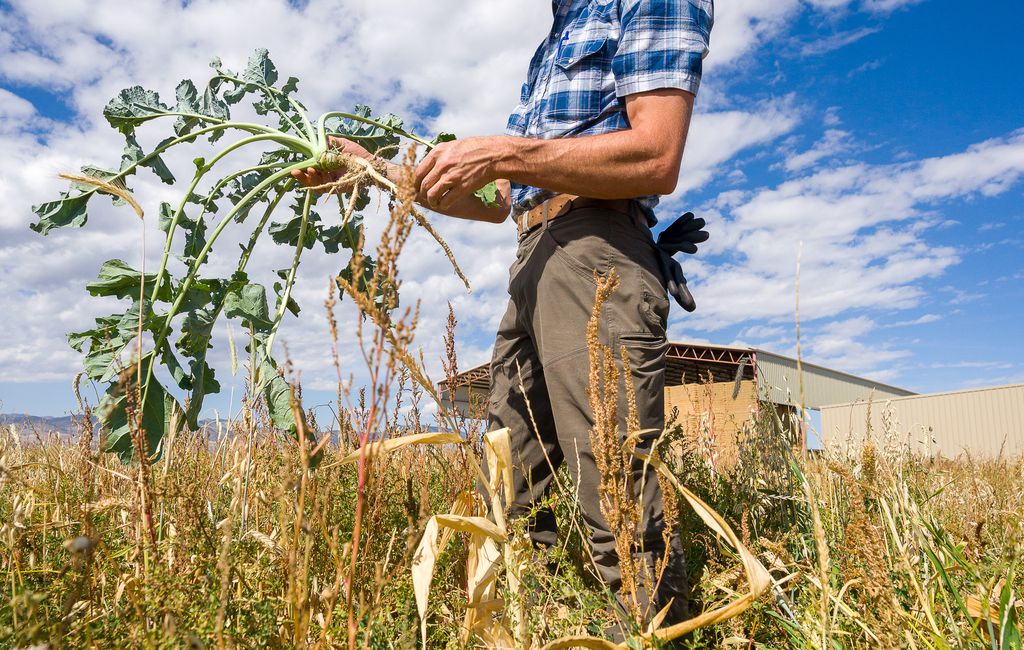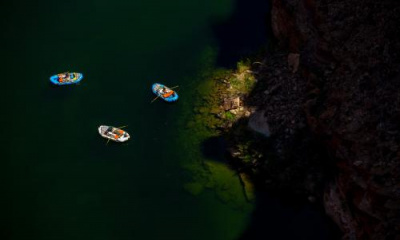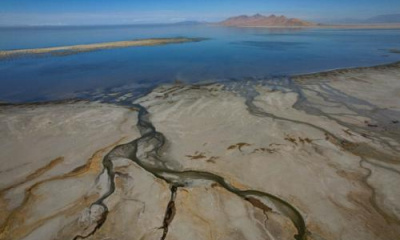A Utah soil conference offered sustainable alternatives to traditional farming
This story is part of The Salt Lake Tribune’s ongoing commitment to identify solutions to Utah’s biggest challenges through the work of the Innovation Lab.
At a recent conference in St. George, a couple of hundred farmers gathered to listen to presentations on cover crops, nematodes, manure, and fungus.
Giddy is not a word that often describes the average Utah farmer, but many attendees came close at the Soil Health in the West Conference organized by the Utah Department of Agriculture. “This is as exciting as it gets for us,” said Sara Patterson of Red Acre Farm in Cedar City, which hosts workshops on sustainable agriculture practices.
For most Utahns, soil science may not be the sexiest topic, but it ranks among the most important as they look for ways to preserve the Great Salt Lake, and as the state faces a dry future.
Estimates vary, but agriculture consumes around 82% of Utah’s developed water. Yet, experts say farmlands could become far more drought resilient and use the water they get with far greater efficiency by adopting a few key best practices.
Recovering addict
Jimmy Emmons, with his cowboy hat, quick wit and an accent seemingly drawn from the warm west Oklahoma soil he works, could be the poster child for rural America.
Jimmy came to the conference with something to confess. “I was addicted to tilling, and I’m still in recovery,” Emmons said. His confession ran for nearly two hours before a packed room.
Tilling — or digging up and turning the land — is practically synonymous with farming. Abandoning the process is considered the first and fundamental step toward healthier soil.
“What was Mother Nature doing before we showed up?” Emmons asked. “She didn’t have mechanical disturbance of the soil, she cycled water, she had diverse plants and animals and nutrient cycling. She was doing very, very well before we got here.”
For Emmons, the question, then, is: Can we farm in nature’s image?
Among other benefits, abandoning tillage promises to increase soil health, water retention and beneficial insect, worm and fungus populations, and decrease reliance on chemical pesticides, herbicides and fertilizers. It even saves money.
“I saved $100,000 on fuel costs just by moving to no-till,” said Emmons, who also cut his chemical use by 85%, with significant cost savings.
So why aren’t more farmers turning to no-till?
“Why? I’ll tell you why,” said Bir Thapa, who serves as the state soil scientist for USDA-Natural Resources Conservation Service, “because it’s fun. It’s just too fun to till a field.”
Emmons counters that there are different types of fun without tilling.
“You go out with your shovel, dig down and see the worms working that soil,” he said. “You’re creating life.”
No-till farming, presenters said, is ideally paired with the use of cover crops, which are grown primarily for the benefit of the soil rather than for commercial sale. Cover crops can increase biodiversity, retain topsoil and literally keep the ground cooler.
“Cover crops are the soil’s armor and sunscreen,” said Emmons, who grows corn as a cover crop to support his cash crops.
The third component is the introduction of animals, often cattle, that can turn cover crops and cash crop leavings into processed organic material ready to contribute to the soil.
“The result of all this is extremely porous soil, full of cracks and crevices down to a microscopic level, that is protected from evaporation,” Emmons said. “That just sucks up the soil.”
Emmons noted that with 2% organic matter in soil, farmers capture just 20% of a moderate to heavy rainfall. “That means 80% just runs off, probably taking topsoil with it.”
An increase to 5% organic matter will hold 53% of the water from that same rainfall.
“Look around at where we’re at now,” Emmons said, referring to Utah’s ongoing megadrought and the state of the Great Salt Lake and the Colorado River. “How much of a difference would it make to move from 20% water retention to 53%?”
Farming revolution?
Many attendees worried that the conference needed to be the beginning and not the end of Utah’s work in promoting sustainable practices.
Stan Jensen of Sunnyside Up Pastures in Centerfield, whose efforts to transition from traditional farming to sustainable practices were featured last month in The Salt Lake Tribune, sees major challenges to systemic change in Utah agriculture. So does Red Acre’s Patterson.
Conferencegoers were mostly already enthusiasts for soil science. “Unfortunately,” Patterson noted, “this is mostly preaching to the choir.”
In addition, there is a lack of appetite for risk among Utah farmers, said Jensen.
“The margins are so thin in farming,” Jensen said. “Too much can go wrong and it’s hard to convince farmers to experiment and do something different from everyone around them.”
Jensen and Emmons agree the solution is to start by creating small cohorts of farmers who can work together.
“You need three farmers in the same county, comparing notes on what worked, what didn’t,” said Emmons, who has relied on a network of his own in dry western Oklahoma.
Overall, attendees were encouraged by the workshop, but concerned by the pace of Utah’s investment in agricultural transition.
“Utah is 50 years behind on these sustainable practices,” Jensen said. “That’s a problem because there are conditions specific to Utah that we need to figure out. We really need to reframe and think about agriculture differently. To invest in agriculture differently.”









